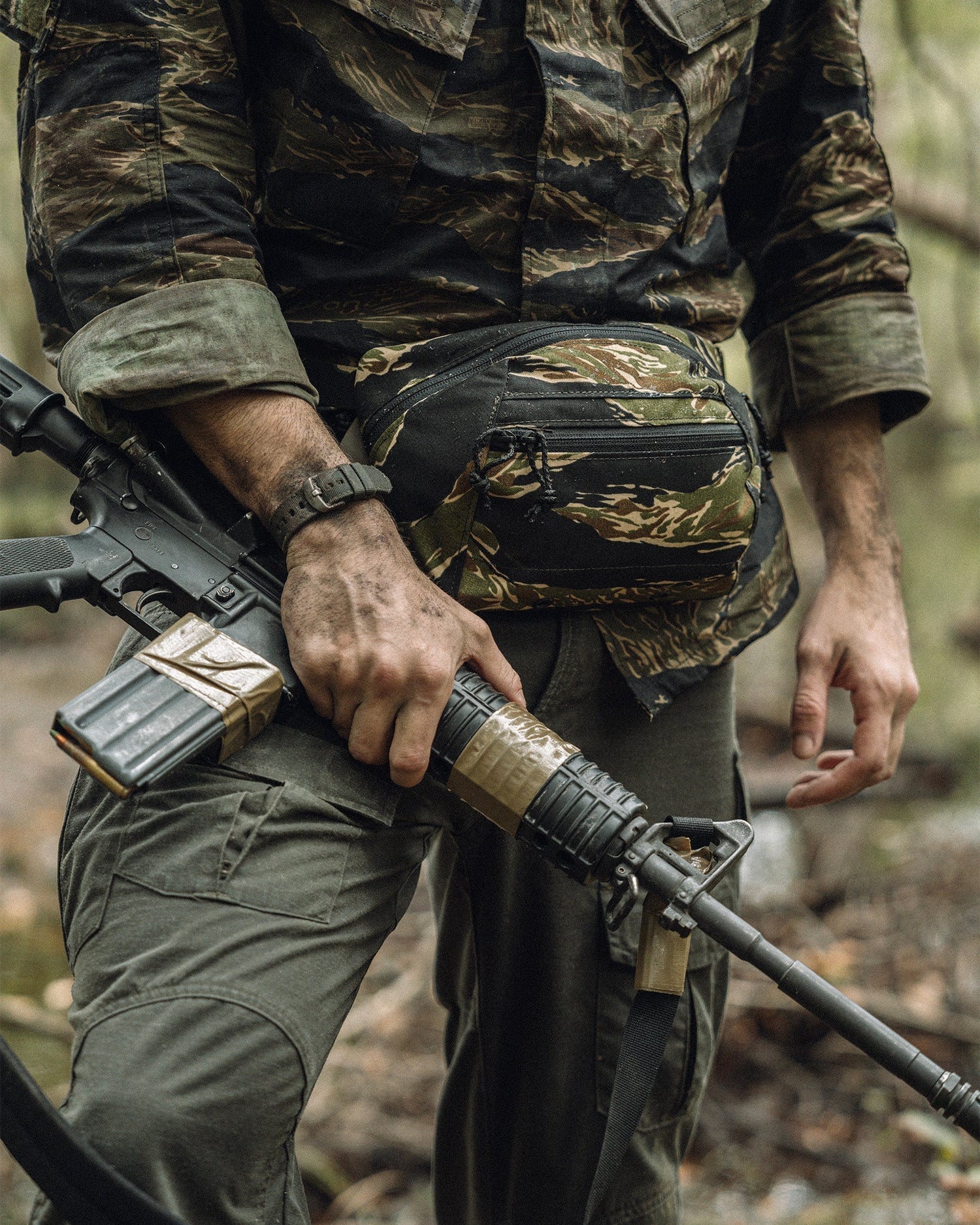Camouflage of Individual Weapons
On the battlefield, visibility kills.
A glint on a barrel, a clean edge, a reflection off metal — that’s all it takes to draw fire.
Weapon camouflage isn’t decoration; it’s survival strategy.
Every coat of paint, every textile wrap, every matte surface serves one purpose: to reduce detection, enhance stealth, and secure mission success.
This guide explores the reasons, methods, and best practices for mastering this quiet art of concealment.
1. The Importance of Weapon Camouflage in Operational Environments | Camouflage of Individual Weapons
Disappear Without Vanishing
A weapon is part of the soldier.
If it stands out, the rest of the camouflage fails.
Metallic reflections, sharp lines, and hard angles catch the eye instantly.
An uncovered rifle betrays its user, even if the uniform blends perfectly with the terrain.
By concealing those visible surfaces, the soldier merges with the environment — a shape among shadows, a motionless echo in the landscape.
Breaking the Light Before It Betrays You
Metal reflects — even under clouds.
Barrels, scopes, and receivers can flash for a split second, and that’s enough.
Matte paints, anti-glare sleeves, and low-emissivity coatings stop those deadly sparks.
Under sunlight, the weapon stays silent, inert, unseen.
Infiltration: The Art of Visual Silence
In infiltration missions, silence extends beyond sound.
A well-camouflaged rifle avoids both visual and thermal detection.
It moves through light without interrupting it, crosses open ground without trace.
Sometimes, a single weapon determines whether an entire operation succeeds or fails.

2. Paint and Coatings: The Skin of Camouflage | Camouflage of Individual Weapons
Durable Paints That Endure War
Camouflage can’t fade with the weather.
Modern military paints resist humidity, friction, heat, and dust.
They cling to the surface, protect it, and last through combat conditions.
A good finish must stay matte, uniform, and intact, even after hundreds of hours of field use.
Disruptive Patterns: Breaking Form, Shattering Line
A weapon is a straight line — and the human eye loves lines.
Disruptive camouflage patterns exist to break that visual continuity.
Using stencils or airbrushed layers, operators add irregular shapes that mimic foliage, bark, or shadow.
Once painted, the rifle ceases to be an object; it becomes texture — confusion within the terrain.
Anti-Reflective and Low-Thermal Coatings
Stealth is no longer just about vision.
Thermal cameras scan for heat contrast, not color.
Low-emissivity coatings make the weapon “thermally cold,” reducing its visibility to infrared sensors and drones.
Invisible to the eye. Invisible to the machine. The perfect double cloak.
3. Adapting Weapon Camouflage to Specific Environments | Camouflage of Individual Weapons
Colors and Patterns for Every Terrain
Every terrain demands its own palette:
-
Forest: dark greens, earthy browns, muted shadows.
-
Desert: sand tones, beige, pale ochres.
-
Snow: dirty whites, soft grays, bluish shadows.
The goal isn’t beauty — it’s believability.
The ground texture, the light, and the season dictate the camouflage.
Modular and Flexible Materials
Modern warfare moves fast.
Fixed camouflage no longer works.
Fabric wraps, mesh sleeves, and removable covers allow quick adaptation.
In minutes, a rifle suited for woodland can become ready for rocky terrain.
Flexibility is survival.
Maintenance: The Tactical Habit
A damaged camouflage is worse than none.
Scratches, chipped paint, or worn wraps catch light and draw attention.
Touch-ups and cleaning are part of the mission routine.
A well-maintained weapon remains invisible — and reliable.
4. Accessories and Camouflage Devices for Individual Weapons | Camouflage of Individual Weapons
Textile Sleeves for Barrel and Stock
Simple but effective, textile sleeves cover the most exposed parts: barrel, stock, grip.
They install and remove easily, allowing quick environmental adjustments.
They also reduce sound from contact with hard surfaces and cushion impacts.
Reducing the Thermal Signature
Insulating coatings and thermal wraps block heat radiation.
An unprotected rifle appears as a glowing mark on an infrared display.
A well-fitted cover eliminates that signal.
Cold steel is silent steel.
Field Camouflage: Improvisation in Action
Sometimes, speed matters more than precision.
A mission shifts, a background changes, a soldier adapts.
Tape, cloth, or even bits of vegetation can conceal an exposed surface.
Improvised camouflage is about coherence — matching the immediate environment.
On the ground, creativity becomes a tactical skill.
5. Common Mistakes and Best Practices
Avoid These Errors
A few mistakes destroy all efforts:
-
Using colors too bright for the landscape.
-
Creating patterns too regular or too clean.
-
Neglecting maintenance.
A poorly maintained or inconsistent camouflage draws attention instead of deflecting it.
Functionality Comes First
A weapon must always fire.
Paint or accessories should never block the bolt, the safety, or the magazine well.
Camouflage serves function — never overrides it.
A careless coat of paint can jam a mechanism. Precision matters more than looks.
Adapting Constantly
A forest mission isn’t a city patrol.
Light, dust, humidity, even the season affect visibility.
An effective soldier adjusts his camouflage each time he deploys.
Adaptation isn’t an option; it’s doctrine.
FAQ: Weapon Camouflage Essentials
1. Why camouflage a weapon if the uniform is already camouflaged? | Camouflage of Individual Weapons
Because a naked rifle ruins the illusion.
Metal surfaces reflect light; clean lines betray shape.
Camouflaging the weapon completes the soldier’s concealment — essential in open terrain or infiltration missions.
2. What’s the best camouflage method for each environment? | Camouflage of Individual Weapons
-
Forests: green and brown paints, irregular natural patterns.
-
Deserts: sand and beige tones with diffused shapes.
-
Snowfields: off-white and light gray layers.
Modular materials — wraps, sleeves, nets — allow quick adaptation to changing conditions.
3. How to avoid interference with weapon function? | Camouflage of Individual Weapons
Keep coatings thin and away from moving parts.
Regular cleaning prevents buildup in sensitive zones.
True camouflage should be silent, invisible, and mechanically harmless.
Conclusion
Weapon camouflage isn’t cosmetic — it’s operational discipline.
A visible rifle invites fire; a hidden one controls the fight.
Paint, coating, fabric, or field improvisation — every layer adds a new dimension of stealth.
When properly maintained, camouflage strengthens both discretion and performance.
For professional-grade solutions tested in real-world conditions, explore Nutsof’s advanced military camouflage systems — built for those who know that seeing without being seen is already winning.
Best regards,
The Nutsof Team
Advanced Camouflage & Defense Solutions
🌐 www.nutsof.com
Follow us on Facebook and Instagram for the latest in advanced military camouflage technologies.


